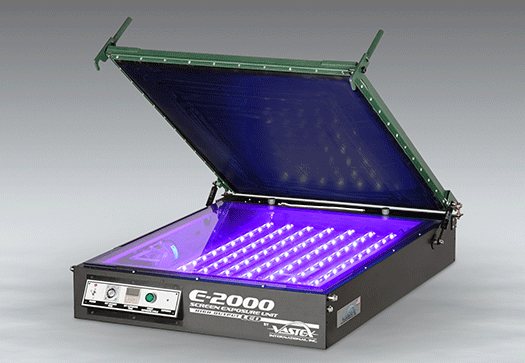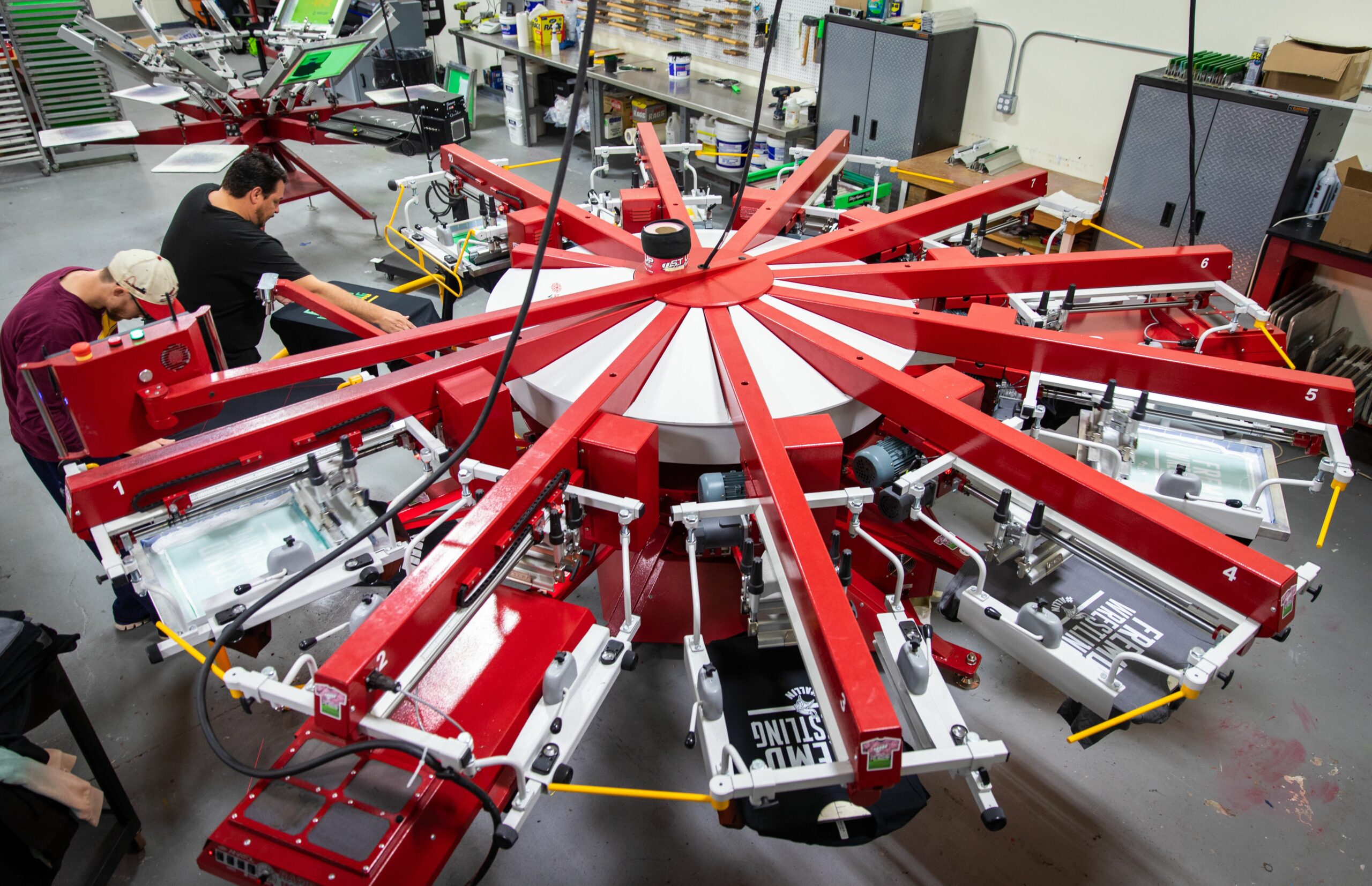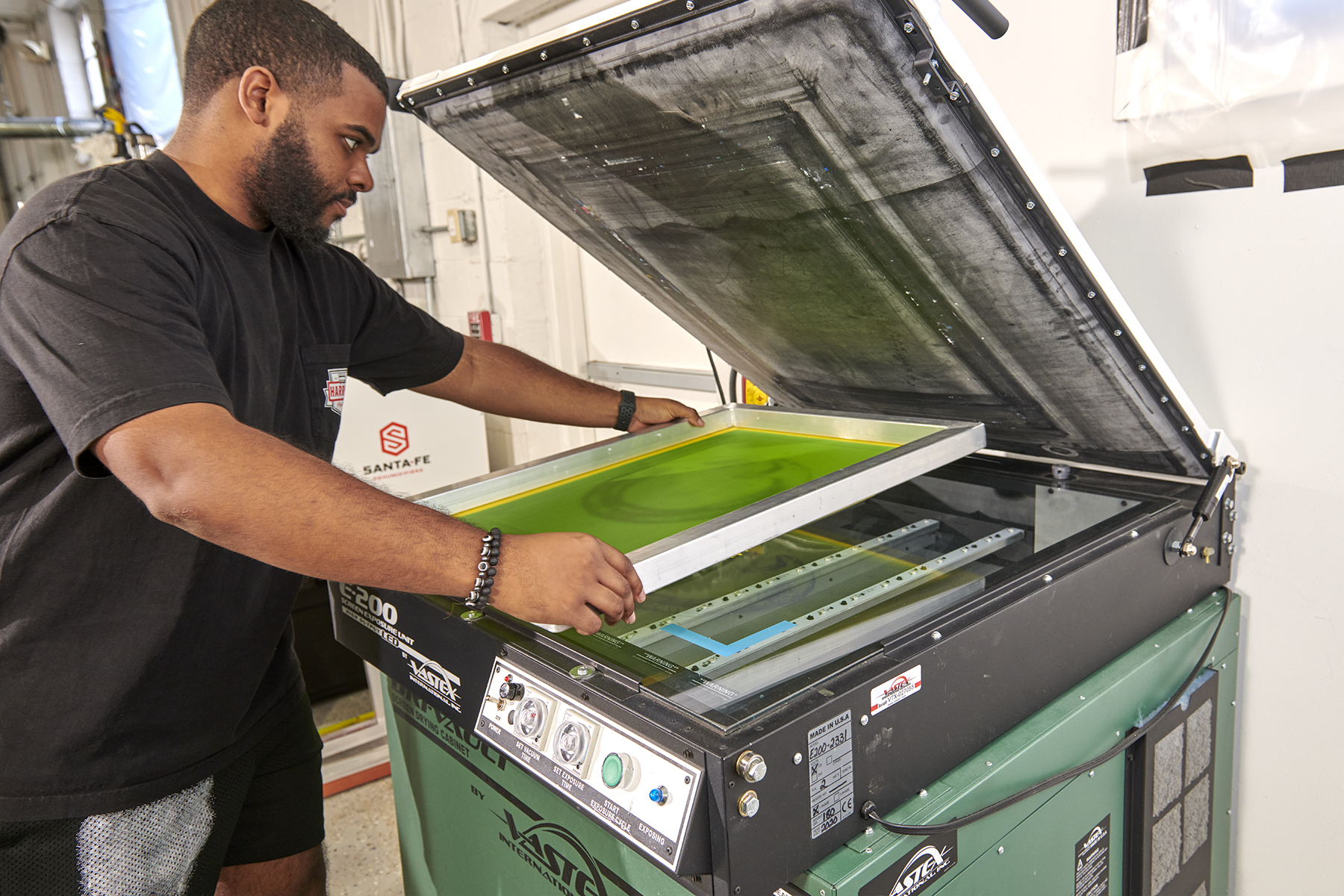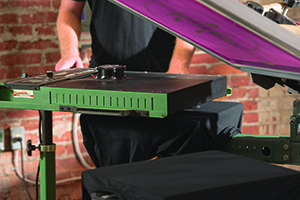March 4, 2014
Writing a column affords you the luxury of sharing your opinions, which are based on personal observations and experience. This is one of those columns.
Some of the following things you are about to read may lead to accusations of bias from equipment vendors. This won’t be the first time since I started writing this column that this has happened. The
ultimate goal is to give readers insight regarding the questions they should ask as they do their own research and discover how LED exposure technology may fit in their respective shops.
If you haven’t heard anything yet about light-emitting diode (LED) exposure technology, don’t feel too badly. While it has been a topic of discussion among tech-savvy screen printers for more than a year, it’s just now beginning to attract interest among apparel decorators in general.
My first introduction to this technology occurred in February 2013 when I hosted a training session at my facility. It included two Saati technical sales reps and some members of an industry forum. Our conversation on optimal screen exposure times flowed into the new LED technology.
I soon learned that industry manufacturers had been conducting research and development on this technology, and in the following months, I saw the topic begin to pop up on industry forums I occasionally visit. Coincidentally, this past summer I was in the facilities of two equipment manufacturers who were doing R&D on LED technology, so I got a sneak peek at their work.
As a light source for screen exposure units, LED technology offers unique potential with respect to time and cost savings — if the variables align properly for your shop and needs. The number of manufacturers currently offering LED exposure equipment is likely to grow, and understanding the technology’s finer points will enable you to ask the right questions when determining whether it’s right for you.
There are many choices when it comes to light sources for exposing screens. They include sunlight, fluorescent tubes, metal halide lights and several kinds of specific high-intensity, single-point lights. The options range in cost, from free to tens of thousands of dollars. You primarily are paying for speed and consistency.
When a coated screen is exposed to an ultraviolet (UV)-rich light source, the photo receptors in the emulsion convert the portions that are not masked by a film, liquid or wax into a solid. The covered (unexposed) areas can then be washed out to create a stencil for ink application. One inherent challenge to this process is the time it takes to convert the emulsion to a solid. This can result in a bottleneck in the screen-making cycle.
Enter LED technology. The theory is that by using the correct LEDs, fine-tuning them to a very narrow and specific UV range (say, 385 nanometers), and pairing them with the correct emulsion that is geared to those specifications, almost instantaneous exposure is possible.
Manufacturers cite reductions in exposure time (and increases in throughput) by a factor of two to four. Instead of screen exposure taking up to 20 minutes with some banked fluorescent tube options, it can be done in seconds. Translation: A screen maker can do 50 screens an hour with LED technology, compared to three to 12 screens in the same time period using conventional units.
There’s no question this is very exciting. But, as when evaluating any new technology, it is critical that you step back and evaluate it objectively, both in and of itself and with respect to your shop.
First, it’s important to remember that what’s new is not how you’re imaging screens. The process still is achieved using film and a vacuum blanket on a light table or computer-to-screen (CTS) unit. The difference is in the UV light source. This will require a different workflow methodology, which is where the real savings can occur if you make the right choices.
SPEED AND YOU
Speed, though a big selling point for LED technology, mandates several other considerations. Just as when you buy a car, the issue is not how fast the car can go, but how fast you will drive it. What kind of throughput is your shop set up to handle? And are you willing to make the necessary workflow changes to take full advantage of LED technology?
You have to weigh the benefit of increased exposure speed against the changes you must make to accommodate it. Again, we’re still talking about exposing screens, and the same variables factor in: screen mesh, mesh count, emulsion, how you coat the mesh, human resources and more.
Having presented seminars on efficient screen making and cleaning at trade shows, as well as doing time studies in my own shop for improvement purposes, I have identified the steps in what I call “the screen loop.” Using the film technique, I have identified 27 steps in the process. Using the CTS method, those 27 steps are reduced to about 20 steps.
For shops using films, no matter which bulb (LED or conventional) is used, there remain the steps involved in creating the films (vellum or waterproof) on an inkjet printer or imagesetter. The outputting process has to be monitored, the films inspected and a preregistration system should be used to position films on the glass for exposing.
The LED bulbs dramatically speed up the process in exposure time. LED bulbs come in a range of types that vary in exposure speeds. If you choose the fastest LED bulb to replace a fluorescent bulb in a traditional exposure unit, exposure times will be reduced from 20 minutes to 20 seconds. If a shop has an exposure unit with low-wattage metal halide bulbs, the exposure time using a fast LED bulb potentially drops from about six minutes to 20 seconds.
Manufacturers offering the LED technology in conventional screen exposure units using “slow” LED bulbs are dropping the typical exposure time from 20 minutes per screen to potentially four to six minutes when compared to a bank of fluorescent bulbs. So it is, by rough estimate, tripling the output from three screens per hour to 10 screens per hour.
However, the speed is relative and the amount of time saved depends on where you’re starting. It may take 20 minutes to expose one screen on a unit that uses a bank of fluorescent tubes, compared to only three to six minutes on a unit that uses the same workflow, but with LED as the light source.
But the savings likely will not be nearly as dramatic if that LED unit’s exposure time is compared with that of a current-generation, single-point metal-halide light source, where 30-second to two-minute exposures are not uncommon with the right emulsion.
Granted, shaving a 30-second exposure to 12 seconds would be a significant decrease in exposure time, but would your throughput or workflow increase correspondingly? Depending on how you are handling other aspects of screen making and exposure, the decrease in exposure time may not effectively yield any additional screens per hour.
NEW CONSIDERATIONS
You must consider whether you’re using CTS — jetting a liquid or wax directly onto the screen — or using film, a vacuum unit and glass, in which case you have to factor in all the film prep time, vacuum draw-down and release time.
The draw-down time of a vacuum may now be considerably longer than the exposure time (the opposite used to be the rule), and faster exposure times may indicate the need for a larger vacuum pump, with multiple ports to keep up. Remember, you never really get rid of bottlenecks, you just move them around.
With either type of exposure unit, you move the bottleneck down the line to the screen washout process. If screens are being exposed every 20 seconds, you will quickly have a big pile of screens waiting to undergo this step.
With a CTS system, all the steps relating to creating the films and outputting them are eliminated. If you are already outputting 20-30 screens an hour, now you can do 60. So if you add this technology, you now have new options to consider and questions to ask. Do you buy a second sink? Or do you buy a double-wide sink? Would it be best to add a presoak dip tank to make washout faster?
If you use a CTS system and want to convert to LED technology to take advantage of the faster exposure speeds, you may have to arrange your equipment to be closer in proximity to reduce steps. This may require moving a wall to achieve maximum return on investment.
With LEDs bringing new technology, expect some trial and error to take place as you figure out how to use it to speed up the production process. Some shops have been beta testing units and can provide valuable feedback, as well as some YouTube videos.
In Part 2 of this two-part series, we’ll discuss some of the additional benefits of LED technology, as well as other issues to consider as you determine whether to upgrade the screen exposing system in your shop.
Greg Kitson is founder of Mind’s Eye Graphics, Decatur, Ind. For more information or to comment on this article, email Greg at greg@mindseyeg.com or visit mindseyeg.com. Hear Greg speak at the Imprinted Sportswear Shows (ISS). Discounts are available if you pre-register: issshows.com.
March 20, 2024 | Production
As with pretty much any business, one of the keys for apparel and T-shirt decorators running a successful custom screen-printing shop is having the right equipment, first and foremost, the right press, or presses.
FULL STORY
March 15, 2024 | Production
As is the case with flash units and dryers, screen exposure units, computer-to-screen-systems and washout booths are critical to successful screen printing of T-shirts and other apparel
FULL STORY
January 16, 2024 | Production
Go to any industry trade show or visit an actual custom apparel screen-printing shop, and your eyes will naturally be drawn to the press, or presses there. This is true whether the shop in question employs a single manual press or is running multiple autos.
FULL STORY




